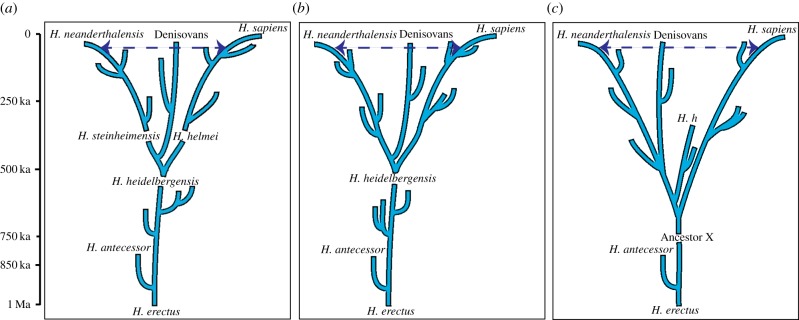Figure 2.
(a) H. sapiens and H. neanderthalensis as species represented only as terminal taxa, with all the traits judged to be diagnostic. H. helmei and H. steinheimensis as intermediate species between each terminal species and LCA, here suggested to be H. heidelbergensis. (b) Looser diagnoses of H. sapiens and H. neanderthalensis including all populations after the split from the LCA. Both species encompass considerable morphological variation along their lineages and populations which go extinct without issue. The overall topography of both trees and the estimated divergence and LCA ‘dates’ are derived from a study of whole mtDNA genomic data [25,27]. (c) A tree which uses the new date and Neanderthal-like morphology of the Sima sample, plus an inferred deeper divergence date based on new genomic mutation rate estimates [93]. Here, a hypothetical and older ‘Ancestor X’ replaces heidelbergensis as the LCA. The Denisovans are also shown on the diagram, as an early derivative of the Neanderthal clade. Their taxonomic status is still unclear [30]. Late Pleistocene inter-lineage gene flow is indicated by the dashed arrows [30,94,95]. (Online version in colour.)

